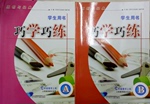题目内容
Tipping isn’t a big part of British culture, unlike in North America, where waiters and waitresses are paid below minimum wage. Tips are usually appreciated, but offering a tip of some services can cause confusion.
In casual restaurants, where you pay for your order at a counter but food is brought to your table, tipping is uncommon. You are welcome to leave a pound or two if you wish. In restaurants where you place your order with a waiter or a waitress and receive your food and bill at your table, it’s customary to tip around 10 percent. In some restaurants, a service charge may be added to the bill automatically, typically 10 or 12.5 percent. In this case, you don’t need to add a further tip. When you pay by credit card, the machine may ask if you want to add a tip. Check your bill to see if a service charge has already been added before paying—if so you don’t need to add a tip on the machine. You can request the service charge be removed from your bill if you are unhappy with the service. In some cases a restaurant may print “service not included” on the bill or menu. This is a request for a tip. You’re not forced to offer anything, but 10 percent would be normal in this situation. Tipping in cafes and fast food restaurant is not expected.
If you use a taxi, round the fare up to the nearest pound shown on the meter. On a journey from or to the airport in a booked minicab you might wish to trip 2 or 3 pounds if the driver helps with your bags.
Be sure to check a country’s tipping culture before you start your tip. For more information, visit TripAdvisor.com.
1.According to the text, ________ in British culture.
A. it is necessary to tip if you are served in cafes
B. it is confusing to tip if you receive your bill at your table
C. it is customary to tip if “service not included” is printed on the bill
D. it is compulsory to tip even if the service is unsatisfying in some restaurants
2.When you pay by credit card, ________.
A. the service charge can be added on the machine
B. the service charge must have been included in the bill automatically
C. the service charge can’t be refused
D. the service charge needn’t be checked before you pay
3.If the British taxi meter shows 58.4 pounds, you are expected to pay ________.
A. 58.4 pounds B. 59 pounds
C. 61 pounds D. 64 pounds
4.What is the best title for the text?
A. Introduction of TripAdvisor.com B. Occasions for Tipping
C. Advice on Tipping in Restaurants D. British Ways to Tipping
 巧学巧练系列答案
巧学巧练系列答案
